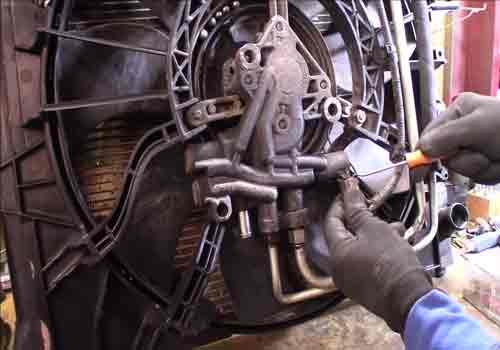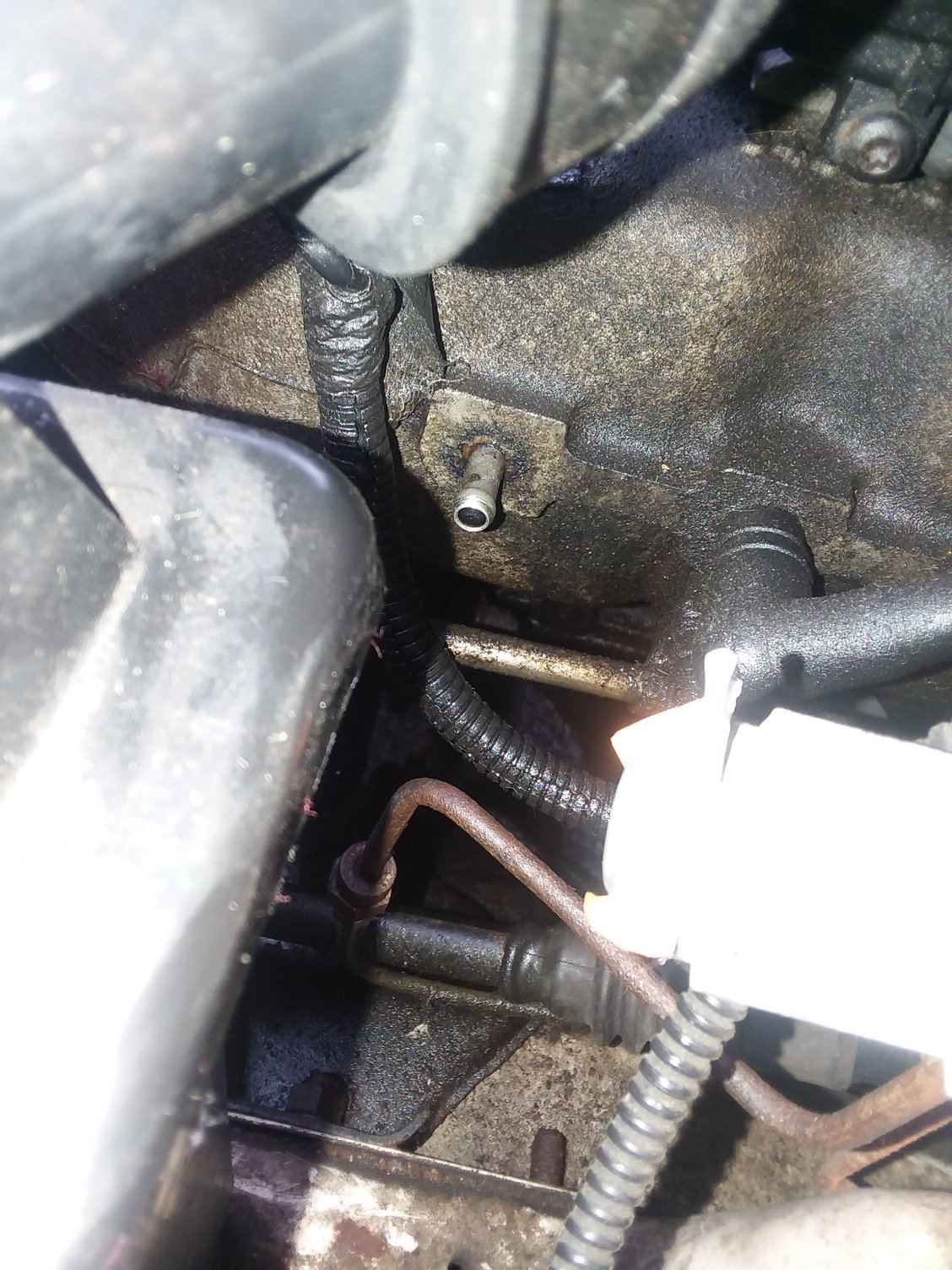P1499 Open Or Shorted Condition Detected In The Hydraulic Cooling Fan Solenoid Control
P1499 Open or Shorted Condition Detected in the Hydraulic Cooling Fan Solenoid Control is a diagnostic trouble code (DTC) indicating an electrical issue with the solenoid that controls the hydraulic cooling fan.
The solenoid is responsible for regulating fluid pressure to activate and deactivate the fan, so any malfunction can cause engine overheating. To diagnose this DTC, begin by inspecting all of the wiring and connections associated with the solenoid, looking for signs of corrosion or damage.
If everything appears secure, then use a multimeter to test voltage at each connection point to ensure proper current flow. If there are irregularities detected in either step, then it may be necessary to replace either just the damaged wires or potentially, even more, components such as relays or other sensors on the circuit.
After repairs have been made and tested, clear any codes stored in memory before performing another test drive cycle to verify the resolution of this failure code.
If you’ve recently encountered a P1499 Open or Shorted Condition Detected in the Hydraulic Cooling Fan Solenoid Control, you may be wondering what it means and how to fix it.
This code is an indication of a malfunction within the hydraulic cooling fan solenoid control system, which can lead to poor performance or even mechanical failure if left unaddressed. In this blog post, we’ll explain what causes this error code and how to diagnose and repair it.
The main cause of this error code is usually due to either an open circuit or short circuit within the hydraulic cooling fan solenoid control system. The open circuit is caused by a break in one of the wires that connect the solenoid valve to its controller unit; while a short occurs when two wires touch each other inside the harness leading from the controller unit to its associated components.
Both of these issues will result in a loss of voltage regulation for your engine’s cooling fan, causing it not to spin at optimal speeds and potentially overheat your engine.

Po1499
If you’re a car owner, then it’s likely that you may have come across the term ‘PO1499’. This is an acronym used by mechanics to refer to the P0420 code, which stands for Catalyst System Efficiency Below Threshold (Bank 1). It’s a generic fault code that can be triggered in various vehicles, and while it doesn’t necessarily mean something is wrong with your car, it’s important to know what this code indicates so you can take the appropriate steps.
First off, let’s talk about what Bank 1 means. The engine of most cars has two banks – each bank contains two cylinders that are fired together at once when the engine runs. Bank 1 refers to one side of the engine (the left-side cylinders) while Bank 2 refers to the other side (the right-side cylinders).
When there is an issue within either one of these banks, this could trigger a P0420 code and result in PO1499 showing up on your dashboard or diagnostic reader.
The catalyst system works by converting harmful pollutants into less environmentally damaging substances before they reach exhaust pipes and enter our atmosphere.
Also Read: P1287 Fuel Injection Pump Controller Supply Voltage Low
Radiator Fan
The radiator fan is one of the most important parts of your vehicle’s cooling system. Without it, your engine would overheat and cause significant damage. In this blog post, we’ll be taking a closer look at what a radiator fan is, how it works, and why regular maintenance is so important for keeping yours in good shape.
First off, let’s define what a radiator fan actually is. A radiator fan is an electric motor-driven device that helps to cool down the temperature inside an engine as it runs by forcing air through the car’s cooling system. It does this by spinning blades that create a breeze across the fins on a car’s radiator which helps dissipate heat away from the engine and keep its temperature within safe levels.
Radiator fans can either be mechanical or electric depending on their design and are powered either directly by battery voltage or through connection with other components such as alternators or water pumps.

Credit: www.cherokeeforum.com
Q1: What is P1499
P1499 is a diagnostic trouble code (DTC) that refers to a system or component malfunction within the vehicle’s powertrain. It indicates an issue with fuel pressure and can be caused by either low fuel pressure or high fuel pressure due to a faulty sensor or mechanical issue. The most common cause of P1499 is that the vehicle’s computer has detected an abnormally low amount of fuel being delivered to the engine.
This could be because there isn’t enough fuel in the tank, because there is something wrong with one of the components involved in delivering it from the tank to the engine such as a bad pump, leaky injectors or dirty filters, or even something more serious like an internal problem inside your car’s ECU (engine control unit).
If you are experiencing this code on your dashboard display then it would be best to take your car immediately for diagnosis and repair at your local garage.
The mechanic will use their specialized tools and knowledge of diagnostics codes such as P1499 in order to identify exactly what part needs replacing and how much work will need to be done before you are back up and running again safely.
Q2: What Causes This Code to Be Triggered
When coding for a website or application, it is important to understand the cause of any errors that may occur. One common error is a code being triggered. This error occurs when there are inconsistencies between what the code should be doing and how it actually behaves.
The most likely causes of this type of error include syntax errors, logical errors, and improper use of data types in your code. Syntax errors refer to mistakes made in the structure or formatting of your code which can prevent it from running properly and lead to an unexpected behavior such as triggering a code.
Logical errors refer to mistakes made in the logic behind your program which can also result in unexpected behaviors like triggering codes.
Improper use of data types refers to using different kinds of data where they shouldn’t be used, such as trying to assign an integer value (such as 1) into a string variable (like “name”).
Other possible causes may include incorrect API calls or issues with third-party libraries you have incorporated into your project; these could cause conflicts within your system that trigger codes unexpectedly.
Q3: How Does This Affect My Vehicle’S Performance
When it comes to vehicle performance, there are many factors that can affect it. From the engine and transmission to the suspension and tires, each component plays a role in how your car performs. In addition, your driving habits can also have an impact on overall performance.
Let’s take a look at some of the most common ways that different parts of your vehicle could be affecting its performance: Engine & Transmission: The engine is one of the main components responsible for powering your car and its general performance. If you’re experiencing poor acceleration or jerky shifts during gear changes, then this may be due to issues with either the engine or transmission system.
Common problems include worn spark plugs or bad fuel injectors which require replacing in order to restore full power and smoothness when accelerating from the rest position.
Additionally, regular oil changes will ensure optimal lubrication for all internal moving parts connected with both systems – including pistons, valves, bearings, etc – thereby giving you better mileage and improved responsiveness when shifting gears or accelerating/braking quickly.
01-04 Jeep Grand Cherokee Hydraulic Fan Solenoid Mod, Remove & Replace
Conclusion
If you’re having trouble with your hydraulic cooling fan solenoid, it could be an open or shorted condition. This is a common issue that can occur in any type of motor vehicle and can cause major problems if not addressed quickly. To determine what the issue may be, you’ll need to do some troubleshooting and testing to identify whether the problem is an open or shorted condition.
If you’ve determined that the open or shorted condition has been detected in your hydraulic cooling fan solenoid control, then there are several things you can do to fix the problem.
You may need to replace the faulty component itself with a new one, check for loose wiring connections, clean out any debris from around the area of concern, or even perform more extensive tests with specialized equipment such as ohmmeters and voltmeters. Taking these steps will ensure that your vehicle’s cooling system remains in optimal working order for years to come!